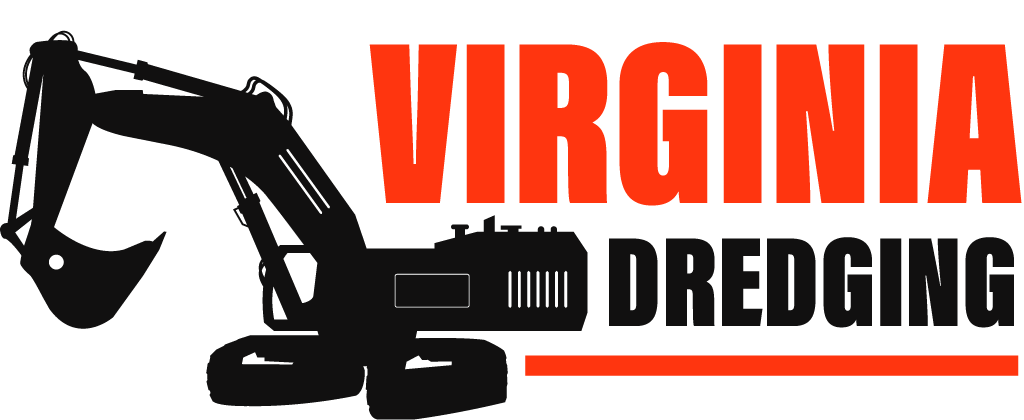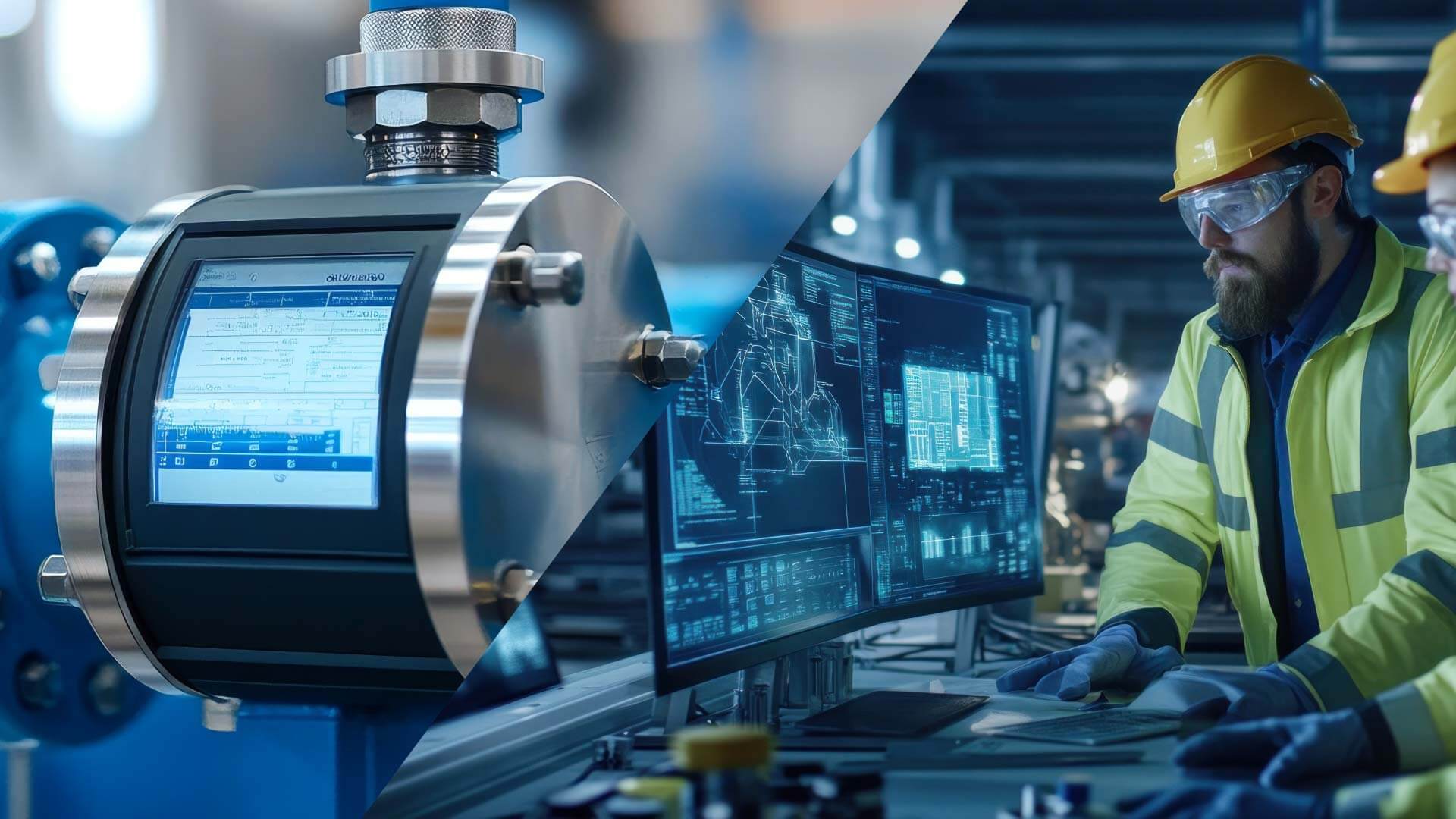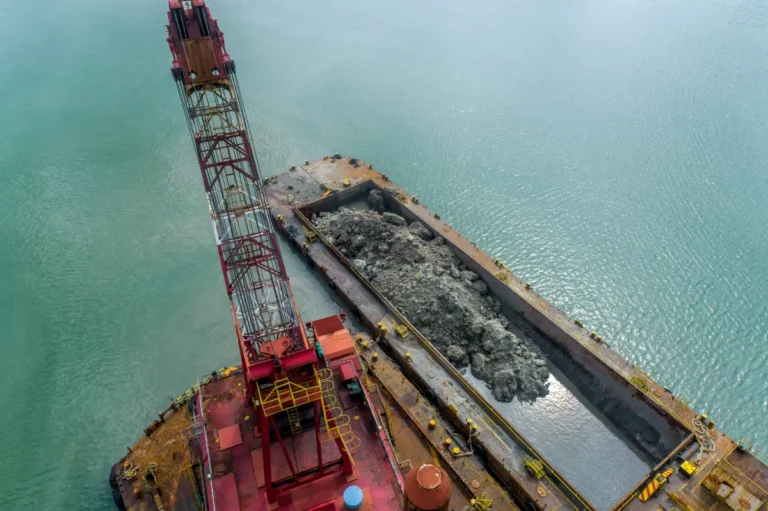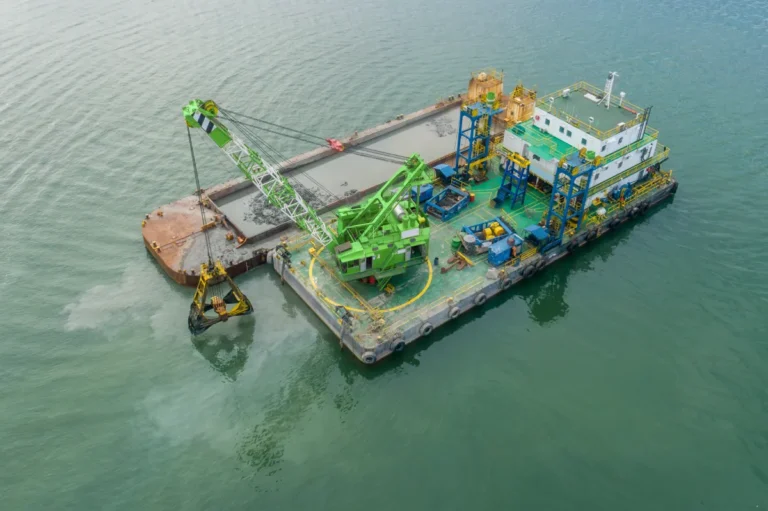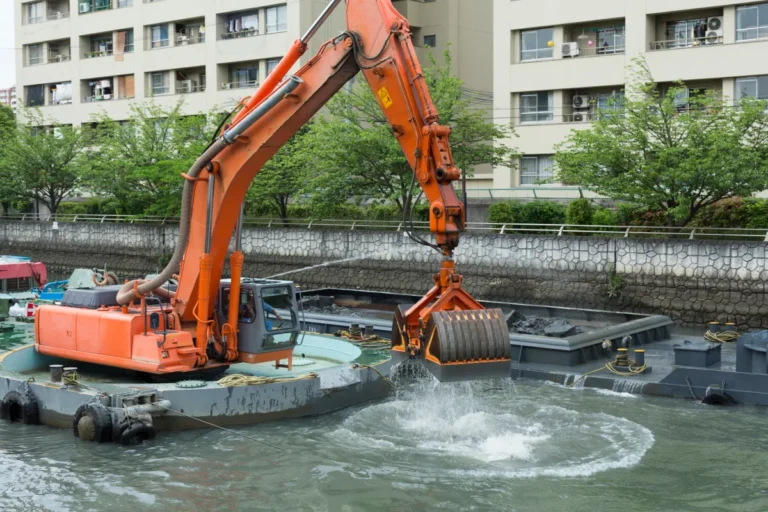Dredging operations are essential for maintaining infrastructure, supporting mining and construction projects, and managing environmental cleanup efforts. The growing demand for efficient sediment removal and material handling has led to increased reliance on submersible dredge pumps. These pumps are widely used in challenging environments such as tailings ponds, industrial lagoons, and mining sites, where the ability to handle abrasive and high-density slurry is critical. However, traditional dredging methods often face issues like clogging, wear, and inconsistent performance, leading to higher operating costs and longer project timelines. To meet the increasing demands for efficiency and cost-effectiveness, operators need to enhance the performance and reliability of their dredging equipment.
Optimizing the performance of hydraulic submersible dredge pumps and submersible slurry pumps is key to increasing productivity and reducing operational costs. One of the most effective ways to achieve this is through real-time monitoring and IoT (Internet of Things) integration. By equipping submersible dredge pumps with smart sensors and data-tracking systems, operators can monitor flow rates, pressure, temperature, and wear in real-time. This allows for immediate adjustments to maintain peak performance and prevent unexpected downtime. IoT integration also enables predictive maintenance, helping to identify potential issues before they escalate, ultimately extending the lifespan of the pump and improving overall dredging efficiency.
Understanding Submersible Dredge Pumps

What is a Submersible Dredge Pump?
A submersible dredge pump is a specialized piece of equipment designed to operate underwater and remove sediment, slurry, and debris from bodies of water or containment areas. Unlike traditional suction dredge pumps, which rely on external suction mechanisms, submersible pumps are fully submerged in the material they are dredging, which increases suction efficiency and reduces the risk of cavitation. These pumps are widely used in industries such as mining, construction, and environmental cleanup due to their ability to handle high-density materials and abrasive sediments effectively.
A hydraulic submersible dredge pump operates using hydraulic power, which allows for greater suction force and handling of heavy slurry compared to electric models. Hydraulic pumps are ideal for remote or hard-to-reach locations where electric power may not be available, and they offer greater durability in harsh environments. Electric submersible dredge pumps, on the other hand, are often preferred for smaller-scale projects or when consistent power sources are available. Common applications for submersible dredge pumps include:
- Mining – Removing tailings and sediment from mining operations.
- Industrial Lagoons – Managing sludge buildup and restoring water flow capacity.
- Tailings Ponds – Transporting heavy slurry from waste containment areas.
- Environmental Cleanup – Removing contaminated sediment from lakes, rivers, and harbors.
How Submersible Slurry Pumps Handle Sediment
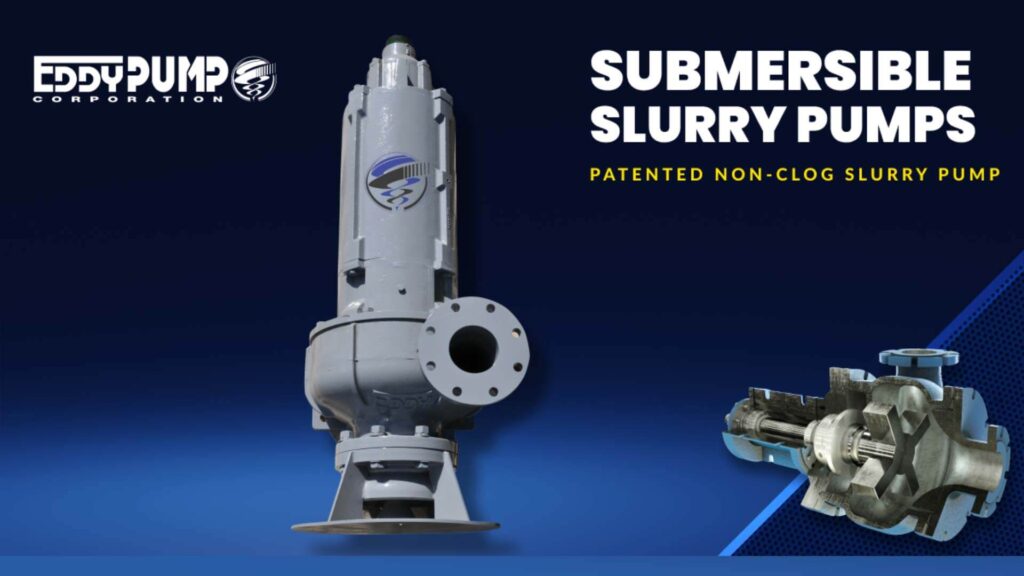
Submersible slurry pumps are specifically designed to handle abrasive and dense materials, making them highly effective for dredging applications. The pump’s impeller, casing, and motor are designed to withstand constant exposure to slurry and sediment without excessive wear or performance degradation.
Design of impellers, casings, and motor configurations:
- Impeller Design – Open and semi-open impellers are commonly used in submersible slurry pumps to allow larger particles and debris to pass through without clogging. Closed impellers provide higher efficiency but are more prone to blockages when handling large or fibrous material.
- Pump Casing – The casing is typically made from high-chrome alloys or other wear-resistant materials to resist abrasion from sand, silt, and other heavy sediments.
- Motor Configuration – Hydraulic submersible dredge pumps use hydraulic motors, which provide higher power output and greater durability in harsh conditions. Electric motors are more sensitive to environmental conditions but offer more precise control over pump speed and output.
Importance of wear-resistant materials:
Submersible dredge pumps are constantly exposed to abrasive materials, which can cause significant wear over time. To extend the lifespan of the pump, high-chrome alloys, stainless steel, and polyurethane coatings are commonly used. These materials protect against corrosion, pitting, and material fatigue, ensuring consistent performance in challenging dredging environments.
Challenges associated with sediment density, particle size, and debris:
- Sediment Density – High-density slurry can reduce flow rates and increase wear on internal components.
- Particle Size – Larger particles can cause blockages or damage impellers if the pump is not designed to handle them.
- Debris – Organic and artificial debris can wrap around the impeller or clog the discharge line, reducing efficiency.
Submersible slurry pumps are engineered to overcome these challenges by using high-torque motors, larger impeller passages, and non-clogging designs, making them ideal for heavy-duty dredging in industrial and environmental applications.
Challenges in Submersible Dredge Pump Operations

Clogging and Wear Issues
Clogging and wear are among the most common challenges faced when operating a submersible dredge pump. Dredging operations often involve handling an abrasive and dense slurry composed of sand, silt, clay, and debris, which can rapidly wear down internal pump components. When abrasive particles come into contact with the impeller, casing, and suction inlet, they create friction and erosion, gradually reducing the pump’s effectiveness.
Clogging is another major issue, especially when dealing with organic debris or fibrous material. A blocked impeller or suction line reduces the flow rate and increases resistance, forcing the pump to work harder and consume more energy. This increased strain not only lowers operational efficiency but also accelerates wear on the pump’s motor and moving parts. In hydraulic submersible dredge pump operations, clogging can lead to pressure buildup in the hydraulic system, potentially causing damage to hoses, seals, and the motor itself. Regular inspection and the use of non-clogging impeller designs are essential to mitigate these issues.
Performance Degradation Over Time
Even with proper maintenance, a submersible dredge pump’s performance will degrade over time due to consistent exposure to abrasive and corrosive materials. The impeller and wear plates are particularly vulnerable to wear, which reduces the pump’s ability to maintain consistent flow rates and suction power. As wear increases, the pump’s internal tolerances change, leading to a loss of pressure and increased slippage of slurry through the pump casing.
Decreased pump efficiency results in higher energy consumption as the pump motor compensates for the loss of performance. A worn submersible slurry pump will require more power to maintain output levels, which increases fuel or electricity costs. In hydraulic submersible dredge pump operations, worn-out seals and impeller blades can reduce suction capacity, leading to incomplete dredging and extended project timelines. Addressing wear through predictive maintenance and timely replacement of worn parts is key to maintaining consistent performance.
Maintenance and Unplanned Downtime
Maintenance is necessary for operating a submersible dredge pump, but excessive wear and unexpected breakdowns can drive up costs and disrupt project timelines. High-density slurry, abrasive particles, and corrosive water environments increase the frequency of maintenance cycles, which adds to labor and part replacement costs. The need for frequent repairs reduces overall equipment uptime, decreasing project efficiency.
Unplanned downtime is especially costly in hydraulic submersible dredge pump applications, where project schedules are tightly controlled. A single pump failure can halt an entire dredging operation, resulting in increased labor costs, delayed project completion, and contractual penalties. Furthermore, rapid wear on key components like seals, impellers, and bearings increases the risk of mechanical failure, creating a cycle of recurring maintenance issues. Implementing real-time monitoring and predictive maintenance strategies can help identify early signs of failure, allowing for scheduled maintenance and minimizing costly downtime.
Introduction to Real-Time Monitoring and IoT Integration
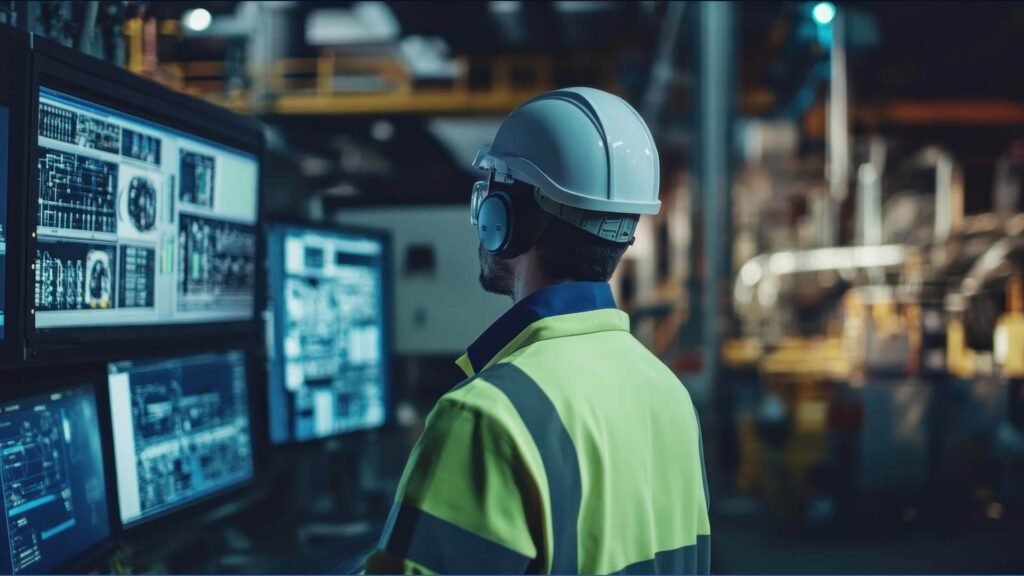
What is IoT and How Does It Apply to Dredge Pumps
The Internet of Things (IoT) refers to the network of interconnected devices and sensors that collect, transmit, and analyze data in real time. In industrial settings, IoT technology has revolutionized equipment monitoring and performance optimization by providing continuous insight into machine operations. For submersible dredge pumps, IoT integration allows operators to monitor critical performance metrics such as flow rate, pressure, temperature, and wear — all from a centralized dashboard.
IoT-enabled sensors are installed on the hydraulic submersible dredge pump or submersible slurry pump to gather operational data. This data is transmitted wirelessly to a cloud-based platform or local control system, where it is analyzed in real-time. Operators can use this information to adjust pump settings, respond to changes in sediment density, and detect early signs of mechanical failure before they lead to costly downtime. The ability to monitor and adjust dredge pump performance remotely improves operational efficiency, reduces maintenance costs, and extends the lifespan of the equipment.
Key Components of a Monitoring System
An effective IoT-based monitoring system for a submersible dredge pump includes multiple types of sensors that track different aspects of pump performance. These sensors provide real-time feedback, allowing operators to make immediate adjustments and prevent mechanical issues.
- Pressure and Flow Rate Sensors
Pressure and flow rate sensors measure the volume and pressure of the slurry being pumped. Maintaining the right flow rate is critical for preventing clogging and ensuring efficient dredging. High-performance hydraulic submersible dredge pumps rely on consistent pressure levels to handle dense and abrasive materials without overloading the motor or impeller.
- Temperature Sensors
Temperature sensors monitor the motor and casing temperatures to prevent overheating. If the motor temperature exceeds safe operating limits, the system can automatically adjust speed or shut down the pump to avoid damage. High temperatures can indicate excessive wear, clogging, or insufficient lubrication, making temperature monitoring essential for preventing long-term mechanical damage.
- Vibration Sensors
Vibration sensors detect abnormal patterns or excessive vibration in the pump. Increased vibration often signals impeller imbalance, bearing wear, or misalignment. Early detection of these issues allows operators to schedule maintenance before they escalate into more severe mechanical failures.
- Wear and Sediment Concentration Sensors
Wear sensors monitor the condition of key components, such as the impeller and casing, by measuring material loss over time. Sediment concentration sensors assess the type and density of the slurry being pumped, allowing the system to adjust pump speed and pressure to maintain optimal efficiency. These sensors are espe
Benefits of Real-Time Monitoring for Submersible Dredge Pumps
Improved Efficiency and Performance
Real-time monitoring significantly enhances the efficiency and performance of a submersible dredge pump by providing continuous feedback on key operational metrics. By integrating IoT-enabled sensors, operators can track and adjust flow rate, pressure, and motor performance instantly. This allows for immediate adjustments to optimize dredging efficiency, especially when dealing with variable sediment consistency and density.
For example, when a hydraulic submersible dredge pump encounters a change in sediment density, the system can automatically adjust suction power and discharge pressure to maintain consistent flow. This reduces the risk of clogging and ensures that the pump is operating at peak efficiency. Real-time data on flow rates and sediment concentration also helps prevent overloading and underperformance, allowing the pump to handle varying conditions without manual intervention. Improved efficiency leads to faster material removal, reduced energy consumption, and increased overall productivity.
Reduced Maintenance and Extended Lifespan
Real-time monitoring enables predictive maintenance, which helps reduce wear and extend the lifespan of submersible slurry pumps. Sensors that monitor impeller condition, sediment type, and vibration patterns can identify early signs of wear or mechanical imbalance. When a sensor detects increased vibration or temperature spikes, the system can trigger an alert or automatically adjust the pump settings to prevent further damage.
Predictive maintenance allows operators to address minor issues before they lead to major breakdowns, reducing both repair costs and unplanned downtime. By maintaining consistent load balancing and ensuring that the pump operates within its optimal pressure and flow range, real-time monitoring reduces strain on the motor and other internal components. This translates into fewer replacements of high-wear parts, such as impellers and seals, and a longer operational lifespan for the pump.
Cost Savings and Operational Reliability
Enhanced operational efficiency and reduced maintenance needs lead to significant cost savings in submersible dredge pump operations. An optimized pump consumes less fuel or electricity, reducing energy costs over time. Efficient operation also minimizes wear on critical components, lowering the need for replacement parts and reducing maintenance-related labor costs.
Real-time monitoring also improves project reliability and helps keep operations on schedule by minimizing the risk of unexpected breakdowns. In large-scale dredging projects, unplanned downtime can lead to costly delays and increased labor expenses. Real-time monitoring ensures that a hydraulic submersible dredge pump or submersible slurry pump operates consistently under varying conditions, preventing operational interruptions and improving overall project profitability. The ability to monitor and adjust pump performance remotely further enhances operational flexibility, allowing operators to respond to changing conditions without being on-site.
IoT-Driven Automation and Control
Remote Operation and Adjustment
IoT integration allows for remote monitoring and control of a submersible dredge pump through cloud-based systems. Operators can adjust flow rate, pressure, and pump speed from anywhere using a computer or mobile device. This remote capability enables faster response to changing sediment conditions and reduces the need for on-site personnel, improving both operational efficiency and safety.
For example, if a hydraulic submersible dredge pump encounters an increase in sediment density, the system can automatically increase suction power and adjust discharge pressure to maintain consistent flow. Conversely, if sediment levels decrease, the system can reduce power to conserve energy and prevent excessive wear. Automated adjustments based on real-time sediment and performance data allow for smoother and more efficient dredging operations. This reduces strain on the motor and impeller, leading to longer equipment life and lower operational costs.
Data-Driven Decision Making
IoT-enabled pumps generate a continuous stream of performance data, including flow rate, pressure, motor temperature, and sediment concentration. Analyzing this data allows operators to make informed decisions about pump settings, maintenance schedules, and overall dredging strategy.
Performance data from a submersible slurry pump can help operators identify patterns in sediment consistency and flow rate fluctuations, allowing them to optimize pump settings for different conditions. Historical data analysis also enables operators to adjust future dredging strategies based on previous project outcomes. For instance, if data shows increased wear under specific operating conditions, the system can recommend adjustments to motor speed or impeller design to improve performance and reduce maintenance requirements.
AI and Machine Learning Integration
Machine learning algorithms enhance the predictive capabilities of IoT systems by identifying patterns and predicting potential failures before they occur. AI-based systems analyze real-time data from a hydraulic submersible dredge pump to detect anomalies in pressure, vibration, and flow rate that may indicate early signs of mechanical failure.
For example, if the system detects increased vibration patterns, the AI can predict bearing wear and schedule maintenance before a breakdown occurs. AI-based automation also allows the system to adjust pump settings dynamically based on sediment density and flow rate, improving operational efficiency. Over time, machine learning algorithms improve the accuracy of predictions and adjustments, further enhancing the performance and longevity of the dredge pump.
Challenges and Considerations in IoT Integration
Data Security and System Reliability
Integrating IoT into a submersible dredge pump raises concerns about data security and system reliability. Operational data, including pump performance, location, and maintenance records, can be valuable and sensitive. Protecting this data from cyber threats is critical to maintaining the integrity of the dredging operation.
Encryption and secure data transmission protocols are essential to prevent unauthorized access. Cloud-based systems must have strong firewall protection and multi-factor authentication to secure data streams. Additionally, ensuring reliable connectivity in remote dredging locations can be challenging. Satellite or cellular-based communication systems are often used to maintain consistent data transmission where traditional network coverage is unavailable.
Compatibility with Existing Equipment
Upgrading existing dredge pumps to support IoT integration can be complex, especially when working with older hydraulic or electric models. Compatibility issues can arise when retrofitting older systems with modern sensors and data transmission hardware.
For hydraulic submersible dredge pumps, adding IoT capabilities may require upgrading motor controls and impeller designs to support real-time adjustments. Similarly, submersible slurry pumps may need additional hardware, such as pressure and vibration sensors, to provide comprehensive data monitoring. Ensuring that the new system integrates with existing infrastructure and control systems is essential for seamless operation.
Initial Investment and Setup Costs
The upfront cost of installing IoT-based monitoring systems and sensors can be significant. High-quality pressure, flow, and vibration sensors, along with cloud-based data processing systems, represent a substantial initial investment.
However, the long-term cost savings from improved efficiency, reduced maintenance, and fewer breakdowns often offset the initial expense. Investing in IoT also allows operators to maximize the lifespan of their submersible dredge pump and improve overall project profitability through more consistent and efficient dredging operations. Balancing the initial investment with anticipated long-term gains is key to justifying the cost of IoT integration.
Best Practices for Implementing IoT in Submersible Dredge Pumps
Selecting the Right Monitoring System
Choosing the right IoT-based monitoring system for a submersible dredge pump depends on the type of sediment, dredging depth, and pump size. High-density slurries and abrasive sediments require robust sensors capable of handling extreme conditions.
Pressure and flow rate sensors in a hydraulic submersible dredge pump must withstand high operating pressures and sediment loads. Vibration and wear sensors in submersible slurry pumps are critical for monitoring impeller conditions and ensuring consistent material handling. Ensuring that the monitoring system is compatible with the pump’s motor and control unit is essential for accurate data collection and automated adjustments.
Training and Operator Involvement
Even with automated controls, operator involvement remains important for optimizing dredging performance. Training operators on how to interpret sensor data and respond to alerts is critical for maximizing the benefits of IoT.
Operators should be trained on:
- Understanding sensor feedback and system alerts.
- Adjusting pump speed, pressure, and impeller settings based on real-time data.
- Recognizing early signs of wear and scheduling maintenance proactively.
- Establishing protocols for both automated adjustments and manual overrides.
Familiarizing operators with the system’s capabilities and limitations improves decision-making and response time during dredging operations.
Performance Testing and Calibration
Proper testing and calibration of IoT-enabled pumps ensure that the monitoring system provides accurate and reliable data. Before full deployment, the system should be tested under different sediment conditions and operational loads to confirm sensor accuracy and responsiveness.
- Flow rate and pressure sensors should be calibrated to account for varying sediment densities and depths.
- Temperature and vibration sensors should be tested under maximum operating loads to verify consistency.
- Ongoing calibration ensures that the system maintains accuracy over time, especially as components wear and operating conditions change.
Regular performance testing helps identify potential weaknesses in the monitoring system and ensures that the submersible dredge pump continues to operate at peak efficiency.
Conclusion
Integrating real-time monitoring and IoT technology into submersible dredge pumps provides a powerful solution for improving dredging efficiency, reducing maintenance costs, and extending equipment lifespan. By leveraging real-time data from pressure, flow, vibration, and wear sensors, operators can make informed adjustments to optimize performance and prevent costly breakdowns. Advanced automation and machine learning further enhance operational efficiency by predicting maintenance needs and adjusting pump settings automatically based on sediment conditions. While the initial investment in IoT integration can be significant, the long-term benefits — including lower energy consumption, reduced downtime, and increased profitability — make it a valuable addition to any hydraulic submersible dredge pump or submersible slurry pump operation.

